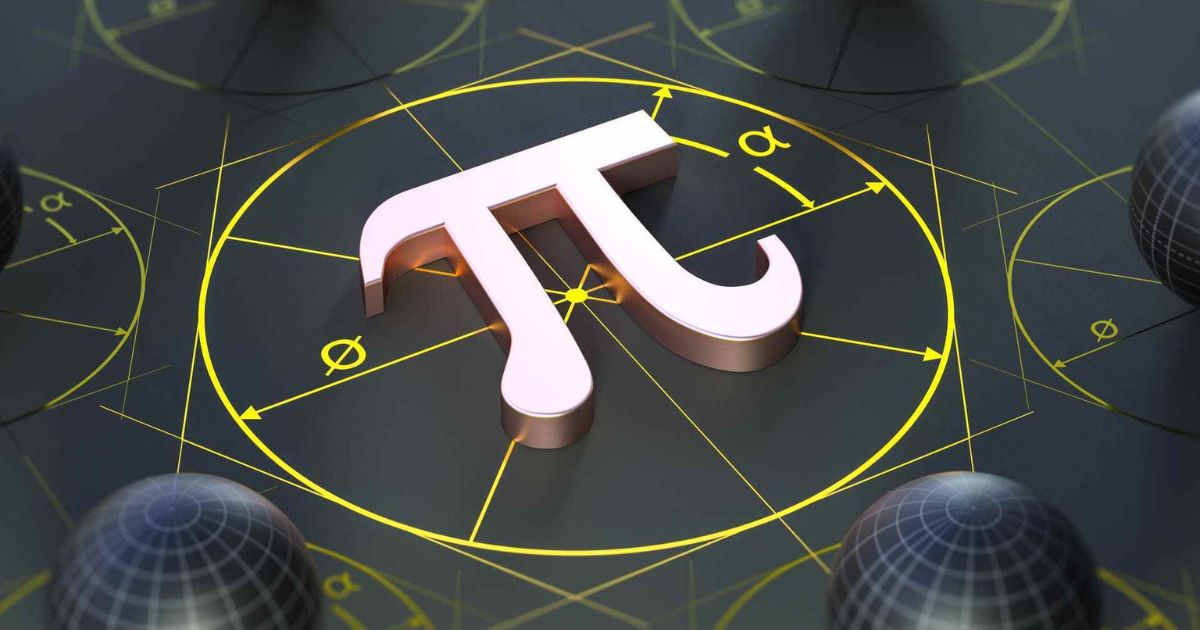Pi (π) is one of the most intriguing and essential constants in mathematics and science. Its ubiquity in various fields, from engineering to art, highlights its significance and mysterious nature. This article delves into the history, properties, applications, and curious facts about pi, aiming to provide a comprehensive understanding of this mathematical marvel. Additionally, we’ll answer some frequently asked questions to further illuminate the fascinating world of pi.
The History of Pi
Ancient Beginnings
The concept of pi has been known for thousands of years. Ancient civilizations, such as the Egyptians and Babylonians, were among the first to approximate the value of pi. Around 1650 BCE, the Rhind Papyrus, an ancient Egyptian document, suggested that pi was approximately 3.1605. Similarly, the Babylonians used a value of 3.125 around 1900 BCE.
Greek Contributions
The Greek mathematician Archimedes (287-212 BCE) made significant advancements in understanding pi. By inscribing and circumscribing polygons around a circle, Archimedes estimated pi to be between 3.1408 and 3.1429. This method, known as the “Archimedean method,” was a breakthrough in the mathematical approximation of pi.
Development Through the Ages
Throughout the Middle Ages and the Renaissance, mathematicians continued to refine the value of pi. In the 15th century, Indian mathematician Madhava of Sangamagrama used a series to approximate pi to 11 decimal places. In the 17th century, European mathematicians such as John Wallis and James Gregory developed infinite series representations for pi, further increasing its precision.
The Advent of Modern Calculations
With the advent of computers in the 20th century, the calculation of pi reached new heights. In 1949, the ENIAC computer calculated pi to over 2,000 decimal places. Today, with advanced algorithms and powerful computers, pi has been computed to over 50 trillion digits, a testament to both human curiosity and technological advancement.
Properties of Pi
Irrational and Transcendental Nature
Pi is an irrational number, meaning it cannot be expressed as a fraction of two integers. Its decimal representation is non-repeating and infinite. Furthermore, pi is a transcendental number, indicating that it is not the root of any non-zero polynomial equation with rational coefficients. These properties make pi a fascinating subject of study in number theory.
The Ubiquity of Pi
Pi appears in various mathematical contexts, often in unexpected places. It is commonly associated with the geometry of circles, where the circumference (C) of a circle is given by C=2πrC = 2\pi rC=2πr and the area (A) by A=πr2A = \pi r^2A=πr2. However, pi also emerges in trigonometry, complex numbers, and calculus, illustrating its fundamental role in mathematics.
Applications of Pi
Engineering and Technology
Engineers use pi in designing and analyzing various structures and systems. From calculating the dimensions of circular components to modeling waveforms in signal processing, pi is an indispensable tool. For instance, in electrical engineering, pi is crucial in analyzing alternating current (AC) circuits and in the Fourier transform, which decomposes signals into their constituent frequencies.
Physics and Cosmology
In physics, pi appears in numerous formulas and equations. It is integral to the calculations involving waves, such as sound waves and electromagnetic waves. In cosmology, pi is part of the equations that describe the curvature of space-time, such as in Einstein’s field equations of general relativity. These applications underscore pi’s importance in understanding the fundamental laws of the universe.
Probability and Statistics
Pi also plays a role in probability and statistics. The Gaussian (normal) distribution, a fundamental concept in statistics, is defined using pi. The probability density function of the normal distribution involves the constant 2π\sqrt{2\pi}2π. Additionally, pi appears in the Buffon’s needle problem, a classic probability exercise involving dropping a needle on a plane with parallel lines.
Art and Music
Beyond science and engineering, pi finds applications in art and music. Artists have used the digits of pi to create visually appealing patterns and designs, while musicians have composed pieces based on the numerical sequence of pi. These creative endeavors highlight the intersection of mathematics and the arts, demonstrating pi’s aesthetic appeal.
Curious Facts About Pi
Pi Day Celebrations
Pi Day is celebrated annually on March 14th (3/14) to honor the mathematical constant. The celebration often involves activities such as pi recitation contests, where participants memorize and recite as many digits of pi as possible. The current world record for pi memorization is over 70,000 digits, showcasing remarkable feats of memory.
Pi in Popular Culture
Pi has made its way into popular culture, appearing in books, movies, and television shows. For example, the movie “Pi” (1998) is a psychological thriller that revolves around a mathematician’s obsession with finding patterns in the number pi. Additionally, pi is often referenced in science fiction and fantasy literature, symbolizing the infinite and the unknown.
The Search for Patterns
Despite extensive computational efforts, no definitive patterns have been found in the digits of pi. The randomness of its digits has intrigued mathematicians and computer scientists, leading to various statistical tests to explore potential patterns. This quest highlights the enigmatic nature of pi and its resistance to easy classification.
Pi and the Universe
Some scientists and mathematicians ponder the philosophical implications of pi, speculating about its connection to the fabric of the universe. The fact that pi appears in fundamental physical laws suggests a deeper, intrinsic relationship between mathematics and reality. This perspective fuels ongoing debates about the nature of mathematical constants and their role in our understanding of the cosmos.
Frequently Asked Questions (FAQ)
What is Pi?
Pi (π) is a mathematical constant representing the ratio of a circle’s circumference to its diameter. Its value is approximately 3.14159, but it is an irrational number with an infinite, non-repeating decimal expansion.
Why is Pi Important?
Pi is crucial because it appears in many mathematical and scientific formulas. It is essential for calculations involving circles, waves, and statistical distributions. Pi’s presence in various fields underscores its fundamental role in understanding natural phenomena.
How is Pi Calculated?
Historically, pi was calculated using geometric methods, such as inscribing and circumscribing polygons around a circle. Today, pi is calculated using infinite series, iterative algorithms, and computer software. Modern computations have determined pi to trillions of decimal places.
Is Pi Truly Infinite?
Yes, pi is an infinite decimal with no repeating pattern. As an irrational number, its decimal representation goes on forever without repeating, making it impossible to fully write out.
What are Some Real-World Applications of Pi?
Pi is used in numerous real-world applications, including engineering, physics, probability, and statistics. It helps design circular objects, analyze waveforms, model physical phenomena, and solve statistical problems. Additionally, pi is used in artistic and musical creations.
How Can I Celebrate Pi Day?
Pi Day is celebrated on March 14th (3/14) to match the first three digits of pi. Common activities include pi recitation contests, baking and eating pies, and engaging in math-related games and puzzles.
Are There Any Famous Pi Formulas?
Yes, several famous formulas involve pi. Some examples include Euler’s formula eiπ+1=0e^{i\pi} + 1 = 0eiπ+1=0, the area of a circle A=πr2A = \pi r^2A=πr2, and the circumference of a circle C=2πrC = 2\pi rC=2πr. Additionally, pi appears in infinite series such as π=4∑k=0∞(−1)k2k+1\pi = 4 \sum_{k=0}^{\infty} \frac{(-1)^k}{2k+1}π=4∑k=0∞2k+1(−1)k.
What is the World Record for Memorizing Pi?
The current world record for memorizing pi is held by Suresh Kumar Sharma of India, who recited 70,030 digits in 2015. This feat demonstrates incredible memory and dedication.
Does Pi Appear in Nature?
Yes, pi appears in various natural phenomena. For example, it is found in the shapes of circles and spheres, the behavior of waves, and the statistical patterns in random distributions. Pi’s presence in nature reflects its fundamental significance.
Can Pi be Represented Exactly?
No, pi cannot be represented exactly because it is an irrational number with an infinite, non-repeating decimal expansion. It can only be approximated to a desired degree of precision.
How Did Ancient Civilizations Approximate Pi?
Ancient civilizations used geometric methods to approximate pi. For instance, the Egyptians and Babylonians used fractions like 3.1605 and 3.125, respectively. Greek mathematician Archimedes improved the approximation by inscribing and circumscribing polygons around a circle.
What is the Connection Between Pi and Euler’s Formula?
Euler’s formula eiπ+1=0e^{i\pi} + 1 = 0eiπ+1=0 is a profound equation that links five fundamental mathematical constants: e, i, π, 1, and 0. This formula is celebrated for its beauty and the deep connections it reveals between different areas of mathematics.
Why Do Mathematicians and Scientists Study Pi?
Mathematicians and scientists study pi because of its fundamental importance in various fields. Understanding pi and its properties leads to insights into geometry, calculus, number theory, and many other areas. Additionally, the quest to compute pi to more digits drives advancements in numerical methods and computer technology.
How Does Pi Relate to Complex Numbers?
Pi appears in complex numbers through Euler’s formula and the complex exponential function. The relationship eiπ=−1e^{i\pi} = -1eiπ=−1 is a striking example of how pi connects the realms of real and complex numbers.
Is There a Simple Formula to Calculate Pi?
While there is no “simple” formula to calculate pi exactly, several infinite series and iterative algorithms provide efficient methods for its approximation. For instance, the Gregory-Leibniz series and the Gauss-Legendre algorithm are commonly used to compute pi to high precision.
Conclusion
Pi (π) is a mathematical constant that transcends its initial geometric origins to permeate various aspects of science, engineering, and art. Its irrational and transcendental nature, coupled with its ubiquity in fundamental formulas, underscores its profound significance. From ancient approximations to modern computational feats, the journey of pi reflects human curiosity and the relentless pursuit of knowledge. Whether celebrated on Pi Day or explored through academic study, pi continues to inspire and intrigue, reminding us of the infinite beauty and complexity of mathematics.



